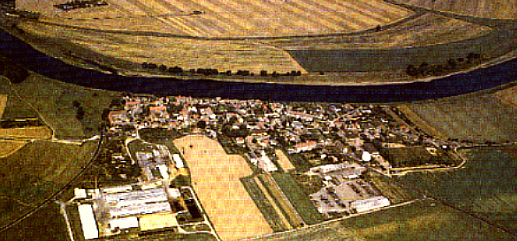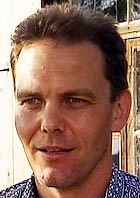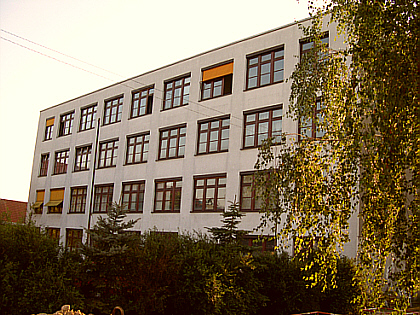 |
||
|
21/22.08 23.08 24.08 25.08 26.08 27.08 28.08 29.08 30.08 31.08 1.09 2.09 3.09 4.09 5.09 6.09 7.09 8.09 9.09 10.09 11.09 12.09 |
Welcome back to Kreinitz.
After 2 days on the road with my bike I arrived in Kreinitz on Jens would do the introduction into the history of the camp and the memorial in the first two days, before Bärbel, who would supervise the actual work, would take over and talk about the archaeological aspects of the work. For two days, Jens and I did the shopping for the first days, got the basic stuff organised in the school, our home for the next 3 weeks sorted out, and then Jens got back to Berlin and I waited for the participants to arrive.
The official camp description read: Date: 21. August-12. September 2004 15 vols. In preparation of the German attack of the Soviet Union the POW-camp Zeithain was established in April 1941 near the banks of the Elbe river. It's task in 1941/42 was the registration and accommodation of up to 30.000 incoming Soviet POW's within Saxony and parts of the occupied Czech territories. Due to continuous malnutrition, diseases, insufficient medical treatment and hygienically conditions about 30.000 Soviet POW's died at Zeithain 1941-1945. Their living conditions did not comply the rules of the Geneva Convention. From February 1943 till the end of the war the camp was used as central POW-hospital for Saxony. During this period prisoners from other countries, especially from Italy, Poland and the United Kingdom arrived. Like the Soviets the Italian POW's were not treated according to the Geneva Convention. Their captivity was also characterized by extreme hardship. Most of Italian POW's at Zeithain suffered from tuberculosis and illnesses caused by continuous malnutrition - about 900 of the so-called Italian Military Internees (IMI) died 1943-45. Their fate was neglected for a long time in Germany, but also in Italy. It is planned to do archaeological work on the former camp site. The work will be done under the supervision of an archaeologist. We will search for remains of buildings, i. e. concrete barracks, kitchens and delousing facilities. Another aim of this years campaign will be the conservation of the archaeological findings of the past two campaigns. The mid-term aim is to get an general overview about the kind of buildings which have been build on the former campsite during World War II. Further to that, it is necessary to do some conservation work at archaeological sites which have been worked on by the past workcamp. As a result of all these efforts it might be decided to make parts of the former campsite accessible to the publicWell, so far the description. In the end, instead of the 15 volunteers, we were just 7 people in the camp: Augusto and Fabio from Italy, Carine from Belgium, Malin from Sweden, Marlen from nearby Leipzig and Tara from Romania. The following days will all have some video footage and pictures. Watch the video first, as it will be much clearer what the pictures are about. |
Pictures: |

 Friday to meet with Jens from the memorial Ehrenhain Zeithain.
Friday to meet with Jens from the memorial Ehrenhain Zeithain. 





